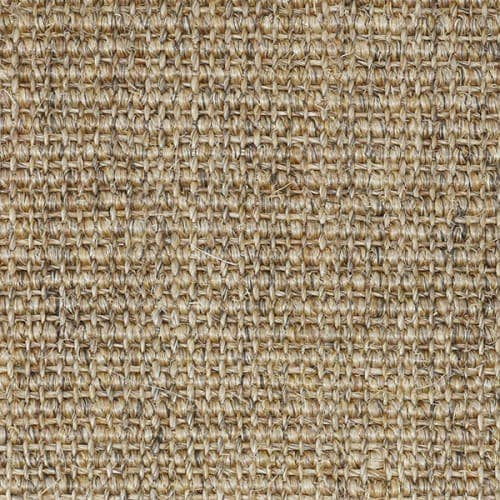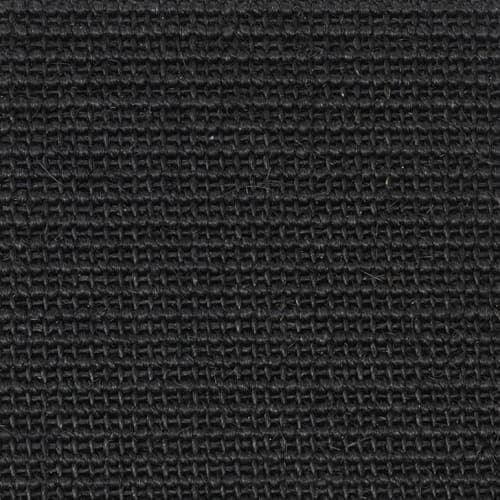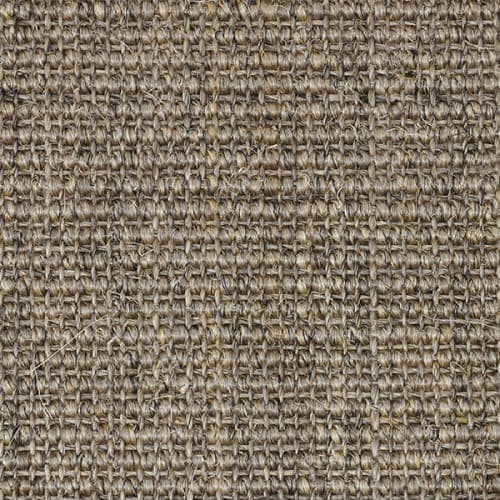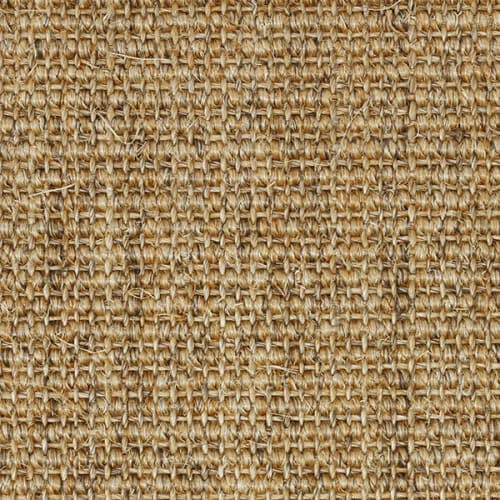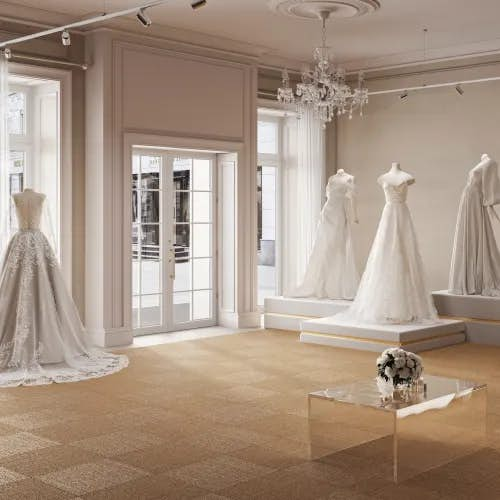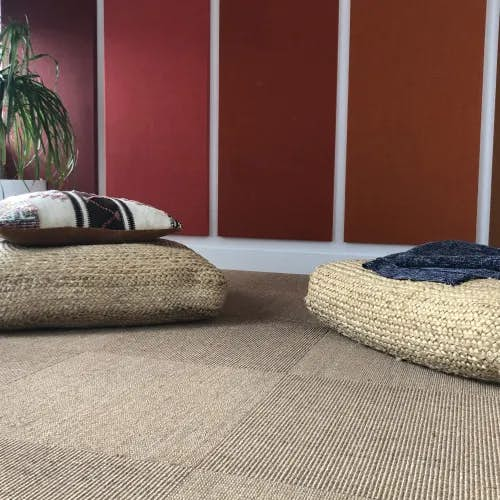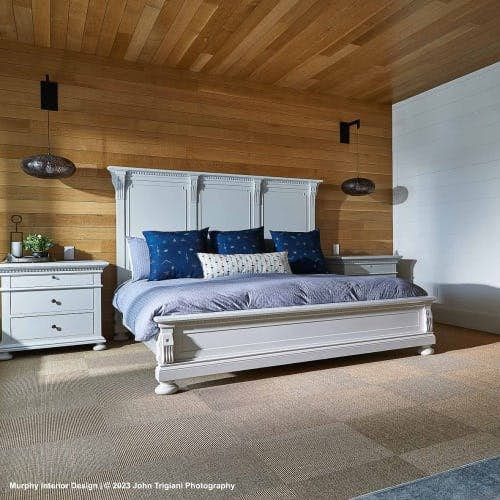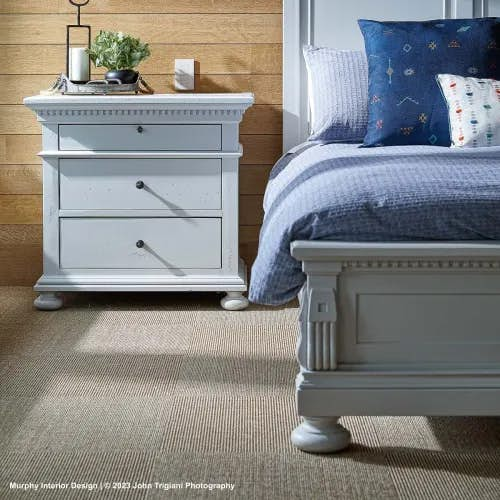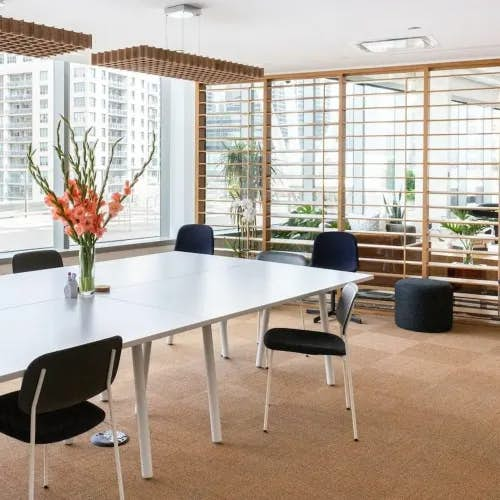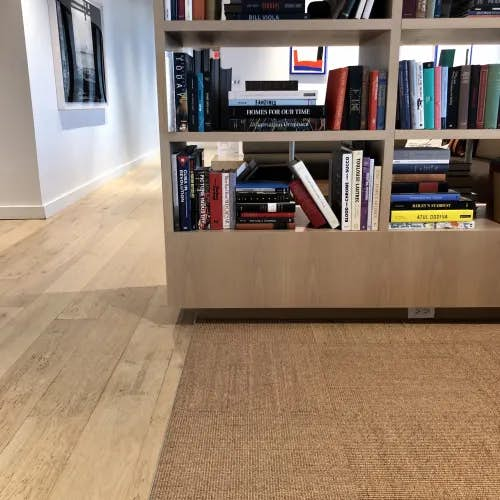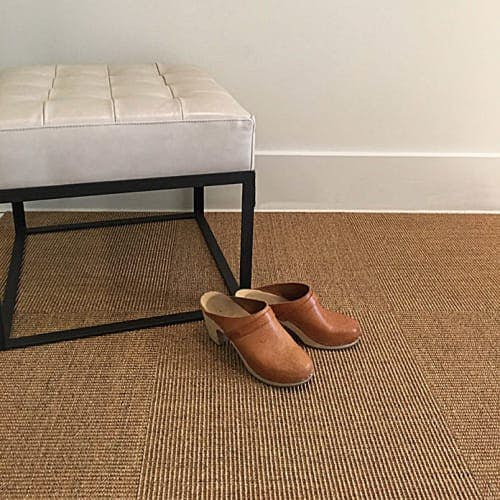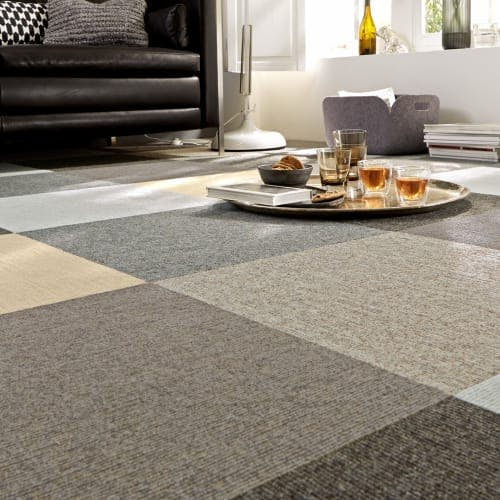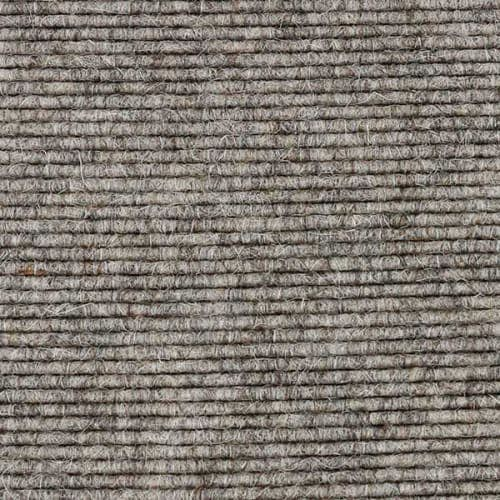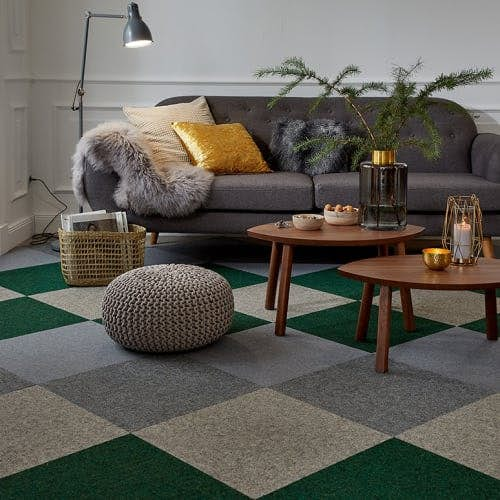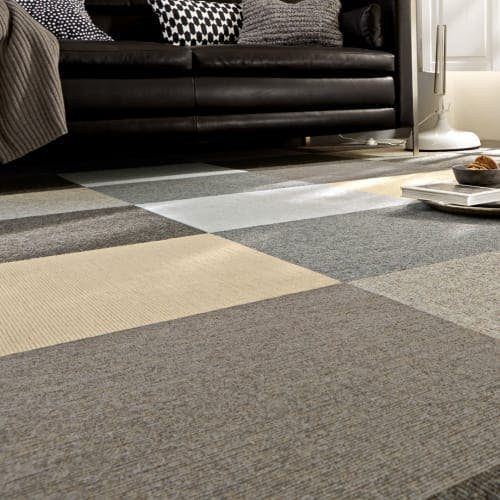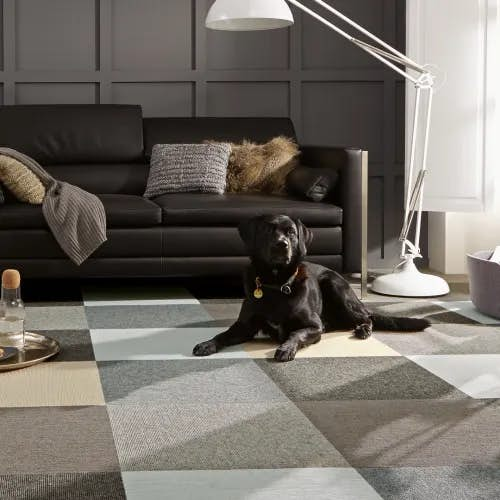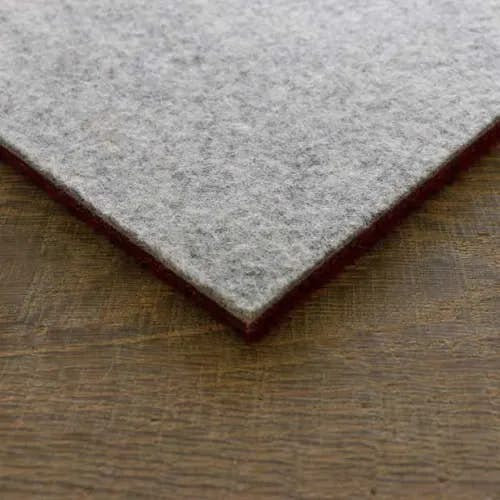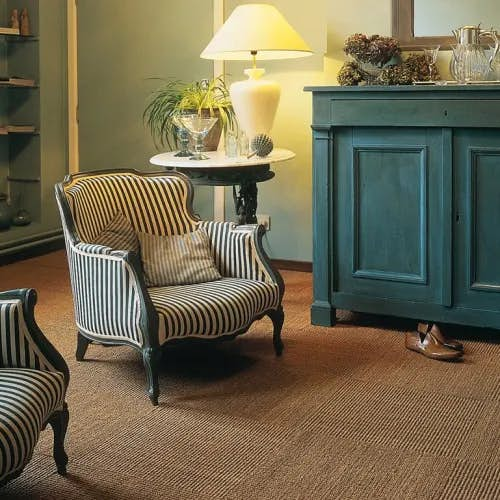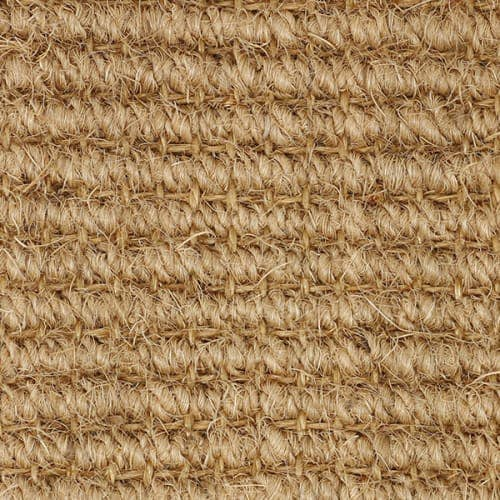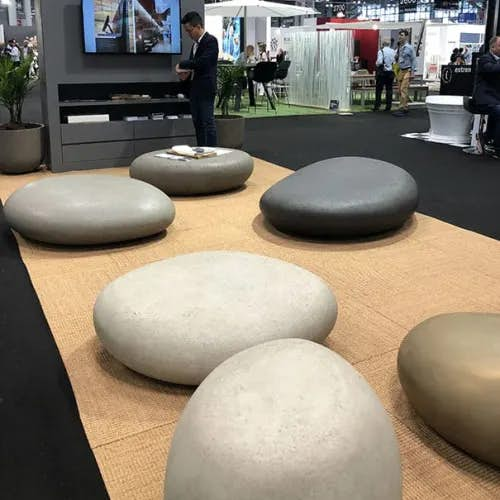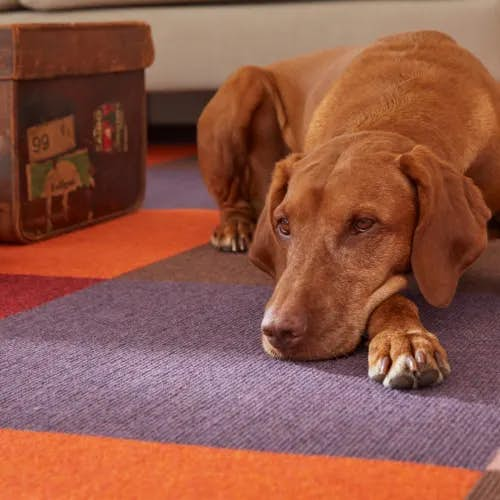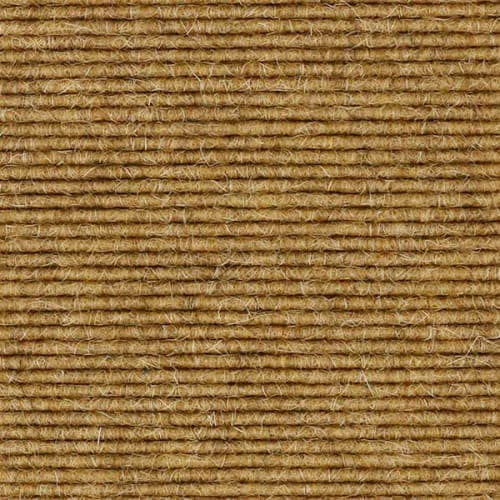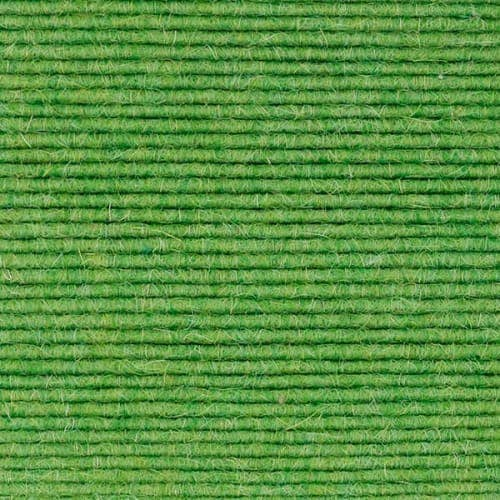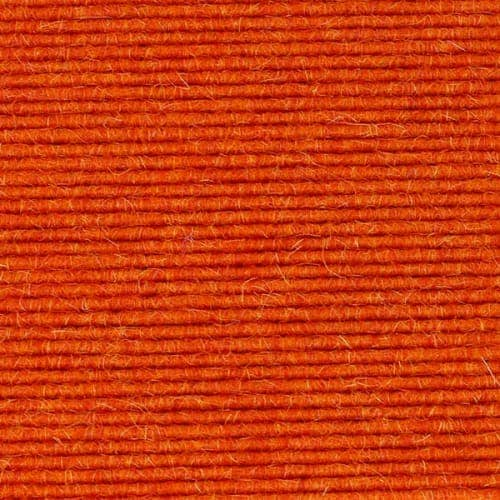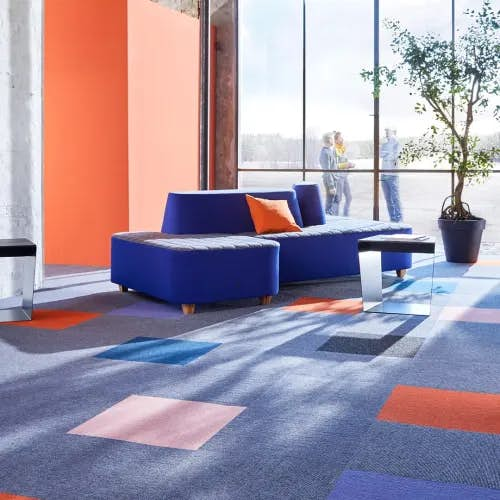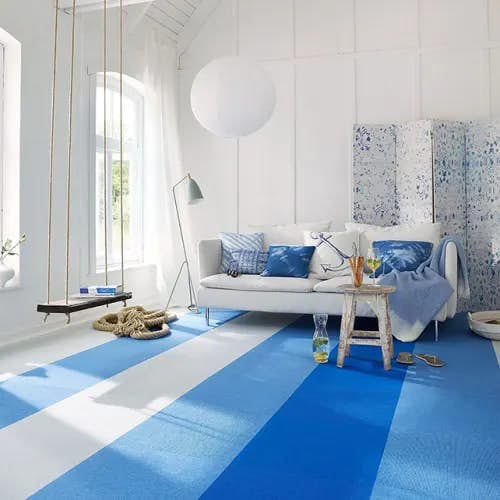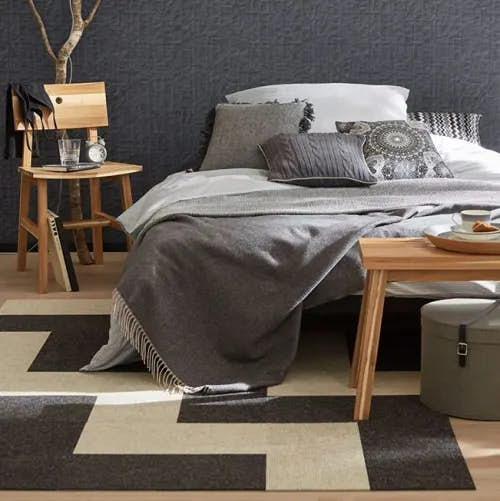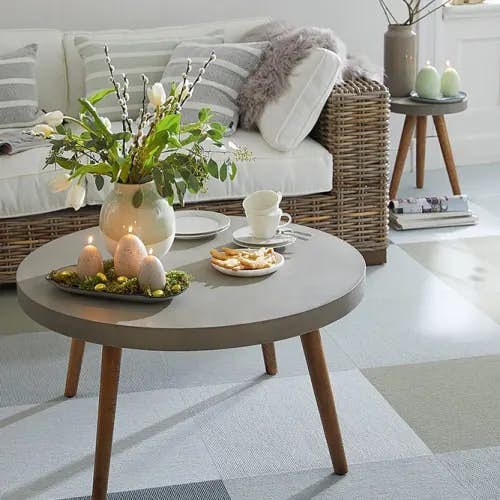Sisal Tiles: Easy to Install, Easy to Replace
Looking for hassle-free flooring? Tiles offer quick transformations, easy cleaning, and effortless replacement.
Clean, crisp, and ready for your vision, our natural Sisal Tiles stand up to heavy traffic with timeless style and are a versatile option to get the natural fiber look.
Carpet tiles are pre-cut squares or rectangles of carpet that are attached to a backing. The tile backing adds stability to the weave and prevents buckling or curling. Carpet tiles are also referred to as tiled carpet, modular carpet, or modular flooring. Instead of being sold off the roll, as in broadloom carpeting, carpet tiles are sold by the case or box.
Our collection includes natural fiber tiles like Sisal Tiles and soft wool carpet tiles like tretford®’s contract-grade Interlife tiles. For more options in a commercial setting, see Commercial Tiles & Planks.
Carpet tiles provide an easy way to customize the flooring in your home.
Cost Effective Carpet tiles are versatile, easy to install, and can provide an instant update to any space.
Modular The modular aspect means that you can create any shape rug or pattern, even to fit oddly shaped spaces.
Lightweight Tiles are lightweight in comparison to a roll of carpet and hence are easier to handle.
Less Waste Buy only what you need—no excess scraps of carpet to deal with.
Refresh If a tile becomes stained or damaged, you can easily swap it out for a new tile instead of buying a whole new rug.
Sound Absorption Carpet tiles help absorb and dampen sound, making interior spaces less echoey and the sound of walking quieter.
Instant Designer Look We source luxury carpet tiles that designers welcome into their spaces. Quality construction, arresting textures, versatile color palettes, and an environmentally friendly resume are a few of the highlights in our collection.
Yes. First, carpet tiles are easy to handle and arrive in boxes (instead of a roll of carpet). Carpet tiles and Sisal Tiles need to be removed from their boxes to acclimate to the room for 24-48 hours before installation. During this acclimation time, revisit your design plans and prepare the subfloor—tiles need a clean, hard surface for installation.
Second, many of our customers install the tiles themselves. But if you are not up for that, even professional installation is less expensive and time-consuming than a wall-to-wall carpet project.
Whether you are loose-laying, using peel-and-stick adhesives, or gluing down, installation is a snap. All our carpet tiles have installation guides to assist you that are accessible under the Installation tab on the product page. Furthermore, for more carpet tile installation tips, head over to our Carpet Tile Installation Guide page.
With most applications, a padded surface beneath carpet tiles is not needed or recommended. Rug padding is by nature soft and could prevent the tiles from laying flat and tightly packed, thereby creating a walking hazard. However, with some commercial tile installations, a compact underlayment is used. This would always be at the discretion of a professional installer.
Some carpet tiles come with padding sandwiched between the carpet and the backing. In these cases, the padding is manufacturer-approved and does not present a walking hazard. If padding and cushioning are important, maybe an area rug or wall-to-wall application is what you need.
Carpet tiles require the same attention that a wall-to-wall carpet or an area rug requires—regular vacuuming, quick attention to any spills, and preferably a “no shoes in the house” policy. In general, a natural fiber like sisal will be more difficult to maintain than a wool or synthetic tile. Natural sisal stains easily, whereas a wool or a synthetic carpet tile has inherent stain-resistance.
One of the best things about carpet tile is the ability to swap out a damaged or heavily soiled tile with a fresh carpet tile (consider ordering an extra box for this purpose) and still maintain design continuity. This makes carpet tile ideal for busy households as well as commercial applications.
For peace of mind, a care guide comes with all our designer carpet tile selections, findable under the Care tab on the product page.
Design flexibility is a hallmark of modular flooring. For a soothing and minimalist look, you can lay carpet tiles with the rib facing all in one direction for a monolithic look. Or create a quarter turn carpet tile pattern by quarter-turning each tile.
If you are looking for a seamless, uniform look, broadloom carpet installed wall-to-wall may be your best choice. Carpet tiles may have slight pattern or color variations between squares and the carpet square edges or seams will be visible.
Additionally, choose two or more tile colors and the design options are endless. You can create a floor covering or a carpet tile rug with stripes, a checkerboard pattern, a dramatic border with edge tiles of a different color, or pops of color randomly placed. Interlife Tiles from tretford® come in an extensive, colorful palette, giving you options for creating the flooring design you want.
Lastly, the natural colorways of our Sisal Tiles or Contract Coir Tiles provide the perfect neutral foundation for layering a rug on top—a wonderful way to build a design style and showcase heirloom rugs.
In addition to installing carpet tiles wall-to-wall, you can easily create an area rug with carpet tiles. As mentioned above, there are many design options available when creating a flooring design with carpet tiles or squares. A free-floating carpet tile rug can be monochromatic or multicolored, display a quarter-turn or checkerboard tile pattern, be large or small.
To help you plan for this project, think about:
Size Determine the ideal size for your rug and the size of each carpet tile. How many rug squares will you need to fill the area? Do the math.
How many cases? Will one box or case of tiles be enough? Should you order an extra case so you have extras on hand? Maybe you need multiple colors and hence, a case for each color. If you plan to create an intricate pattern, like a zig-zag, you should have extra tiles on hand to practice cutting.
Anchor To keep the rug tiles together and stable, you will need to apply adhesive to the underside of the tiles. Additionally, heavy objects like furniture stabilize and ground the tile rug. You want it to stay together and not slide around when stepped on.
What You Need
Carpet Tiles (be sure tiles have acclimated)
Adhesive tape for carpet or modular tiles, or “peel and stick” tile adhesives.
Optional:
If furniture will anchor your carpet tile rug and you don’t want the tiles sticking to the floor, a strong one-sided carpet or duct tape can be applied to the tile seams on the underside for added stability.
Utility knife with sharp blades IF you are making a particular design or need to cut tile to size
CAUTION: please use an appropriate surface to cut on, a sturdy ruler to help measure and guide cuts, sharp blades for clean carpet cuts, and of course, please use caution when cutting carpet tile.
Create the Tile Rug
Assemble the rug tiles into the size you desire. Once you are sure of the size and pattern, begin applying the adhesive squares, starting at an outermost corner of the rug.
Using the carpet tile adhesive tabs or squares, lift up one (internal) corner and attach a quarter of the adhesive square to the underside of the tile. Carefully lift up the adjoining corners and press edges and corners together, creating snug junctions.
At this point, you can apply a strong one-sided carpet tape or duct tape to the seams for added stability.
Caveat: variations occur in color or weave pattern in natural carpet tiles like sisal or wool and are not considered a defect. Even with expert placement, it may be difficult to perfectly align ribbings or patterns.
Enjoy your DIY carpet tile rug!
If you want to learn more about the benefits of modular sisal tiles, discover design layout ideas or how to care for tiles, head over to Sisal Tiles—The Benefits Of Tiles Versus Rugs And Carpet. If you aren't sure that tiles are right for you, our Rug Buying Guide - Everything You Need to Know will help you decide.
In addition to all the aforementioned benefits of carpet tiles or squares, like design flexibility, ease of installation, and versatility, wool carpet tiles offer:
Sound Absorption Not only does the layered structure of carpet tiles lend itself to extra sound absorption, wool or wool blends do an excellent job dampening ambient noise.
Thermal Regulation Wool is renowned for its cozy qualities and it adds a layer of insulation to floors that helps regulate in-house temperatures.
Hypoallergenic Dust, chemicals, and other pollutants are absorbed by wool, keeping the air you breath cleaner. Furthermore, since wool is a natural product, it does not off-gas.
Vibrant Colors Wool yarns dye incredibly well, and wool carpet squares offer a bounty of colorways.
We proudly sell tretford® Interlife tiles—fusion bonded, contract-grade carpet tiles crafted from durable goat hair wool, and available in an array of colors or in classic, quick-ship neutrals.


%2Ff_auto%2Fq_auto%2Fw_1276%2Fv1662491290%2FFlooring%2FVendors%2FFibreworks%2FBeauty_Image%2Fsisaltile_color_sisal_FW_sisaltile-homeoffice_wd_z830gn.webp&w=3840&q=70)

